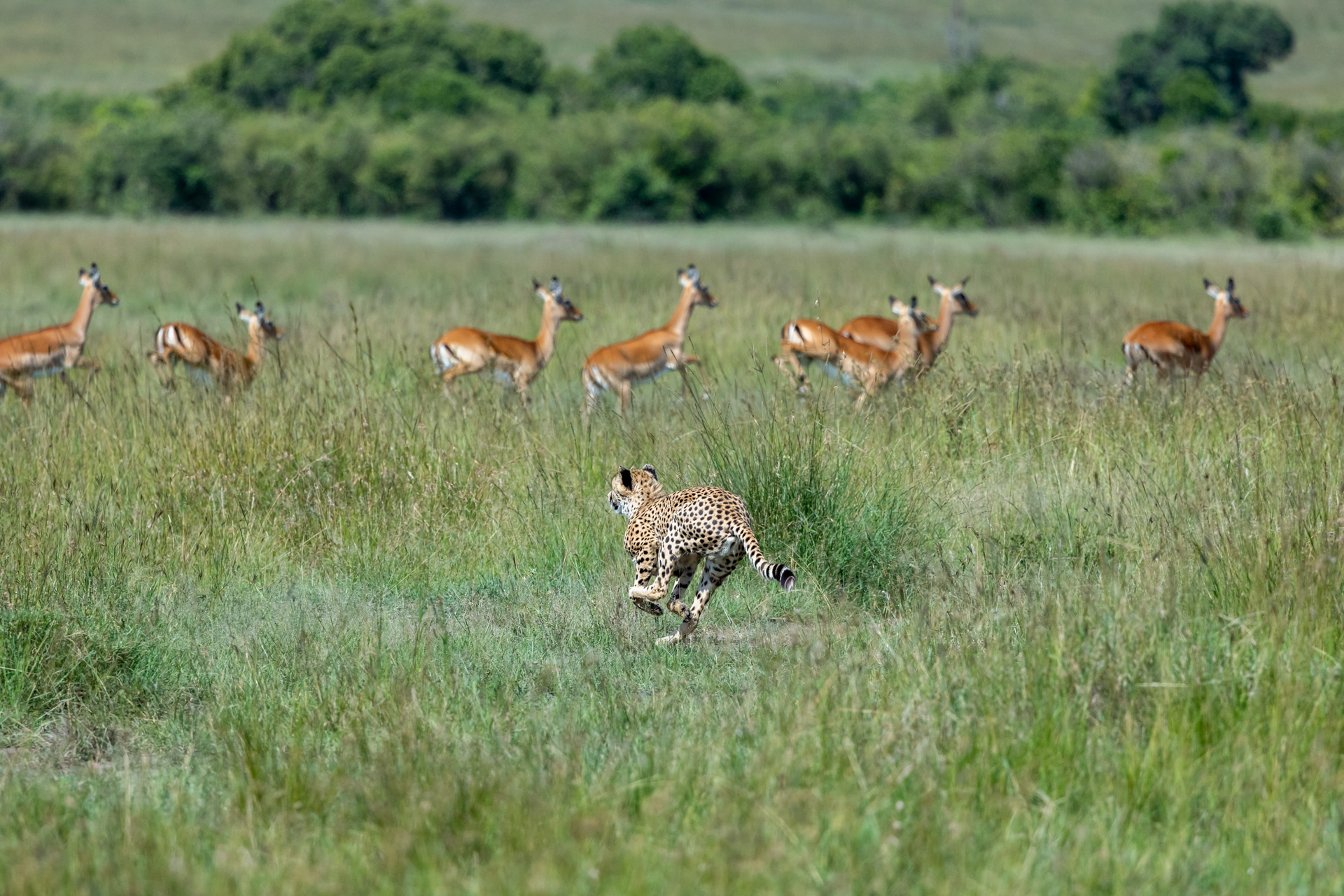
Game viewing in the Triangle just keeps getting better and better as we near the arrival of the wildebeest mega herds from the Serengeti in Tanzania. Most grazing animals are now focusing their attention on areas with short grass and the predators are smartly following suit. With the influx of baby Thomson's gazelles, the jackals are on high alert as they prepare to make the most of it — and some even succeed.
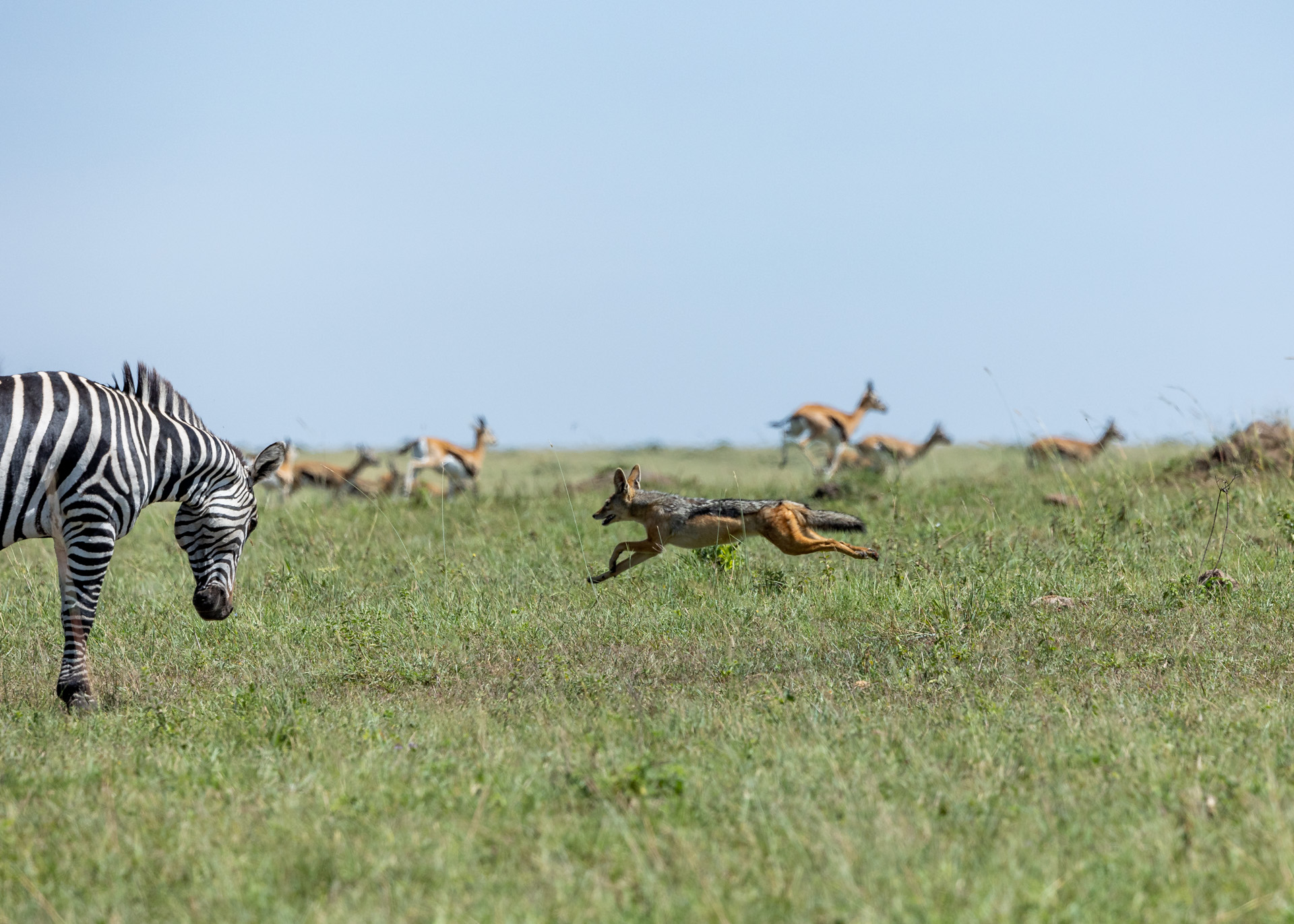
Jackals typically live eight to ten years and are adept at hunting small mammals, such as birds and reptiles. Their physique, with large feet and fused leg bones, make them well-suited for long-distance running, capable of maintaining speeds of 16 km/h for extended periods of time. We watched as a jackal took a baby Thomson on a deadly marathon of life and death with its mother desperately in tow trying to thwart the hunter’s progression.
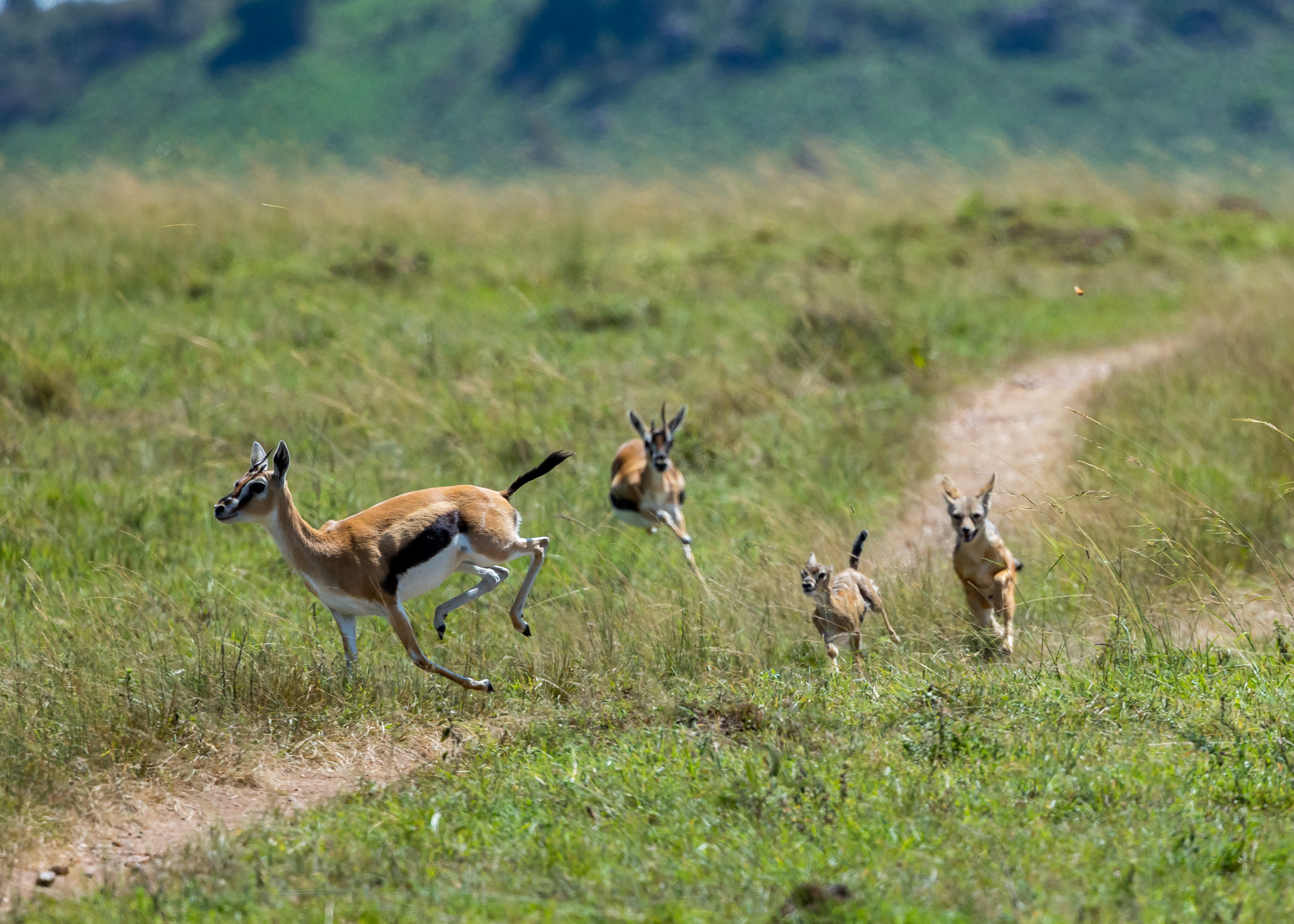
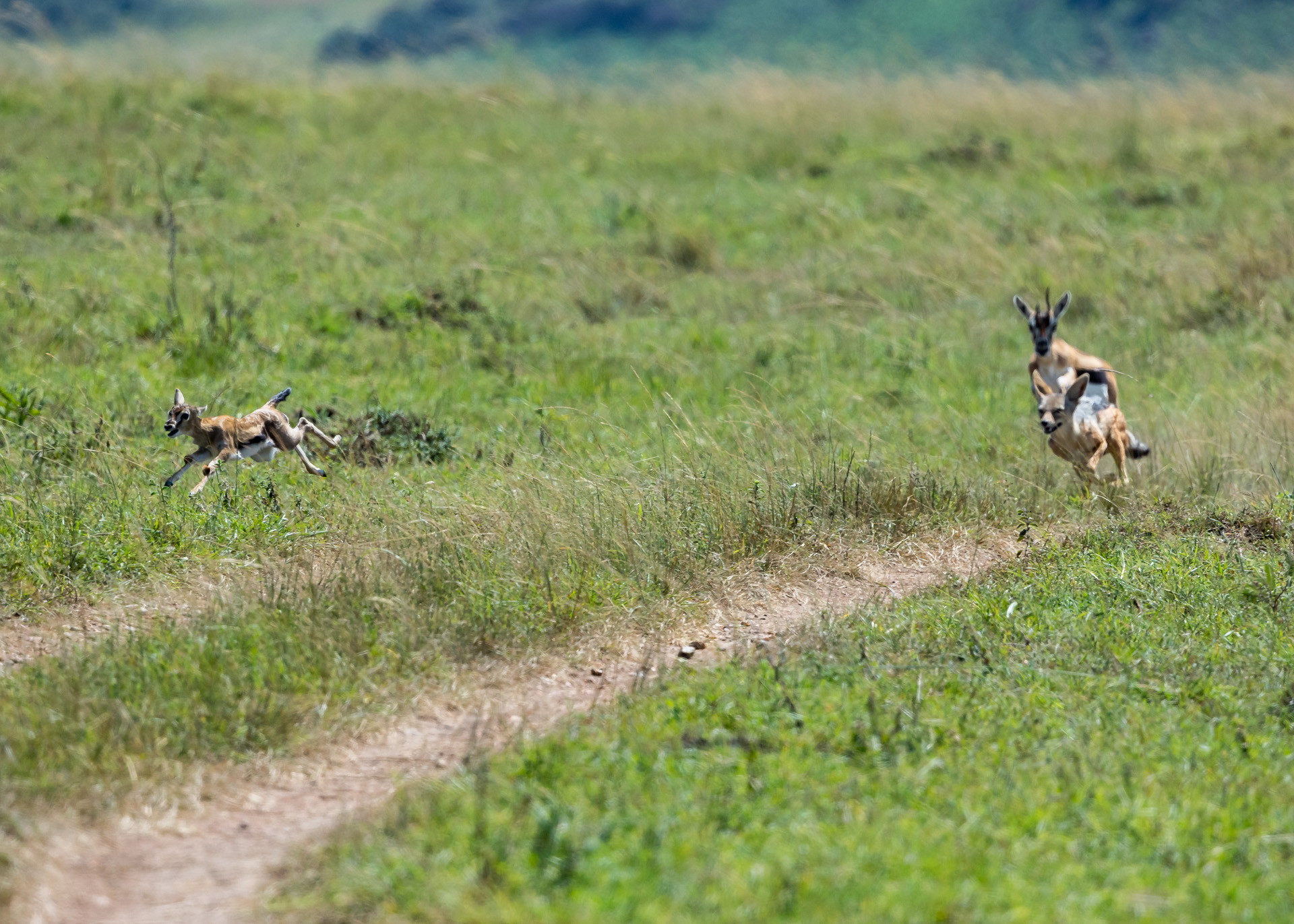
Not far from the hunt, another jackal had successfully taken down a baby Thommy and was aggressively trying to keep the vultures at bay. This clever hunter had separated its bounty into two — making it easier to stash the pieces away from prying eyes.
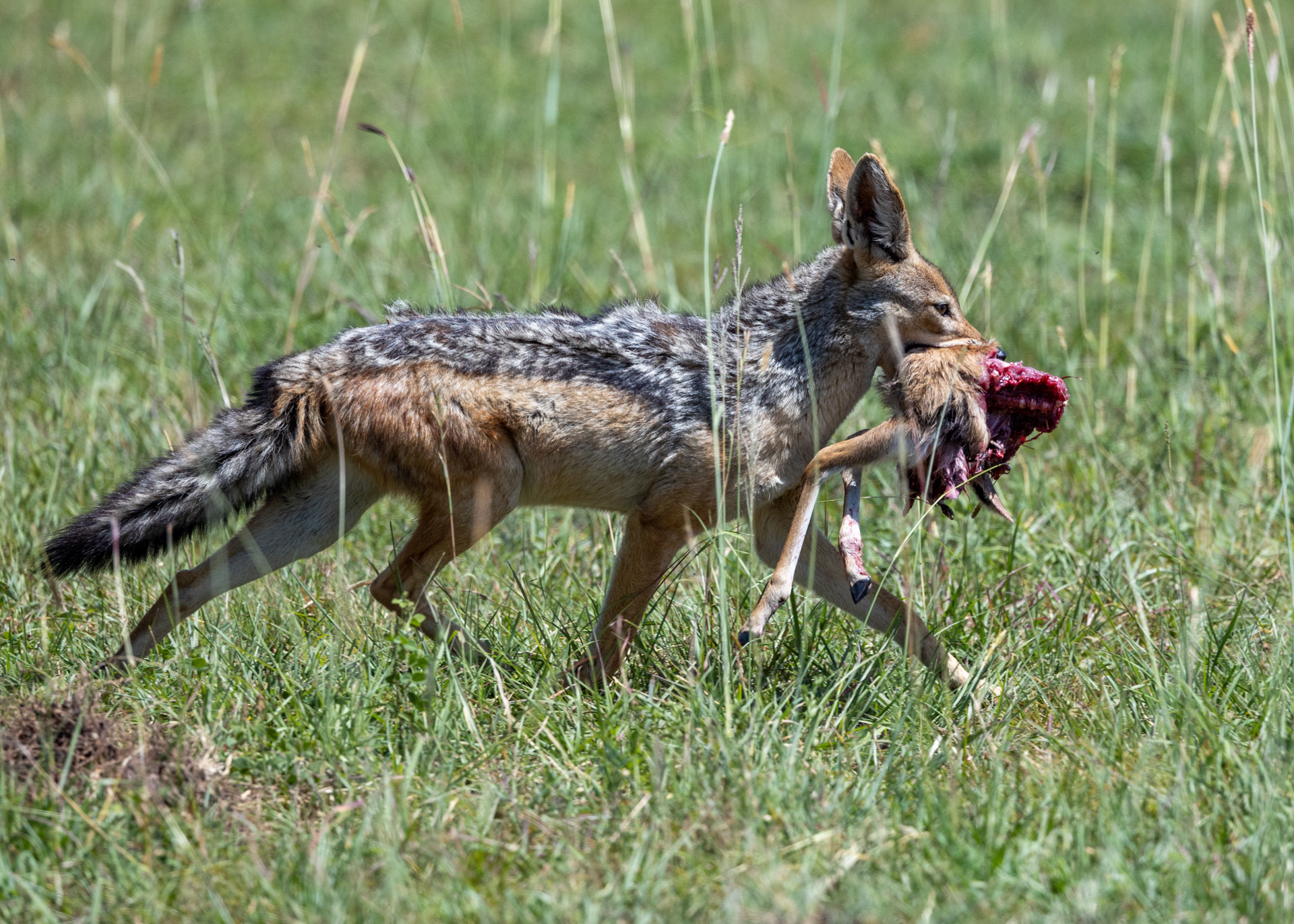
While they may be the fastest mammal, cheetahs rank relatively low in the hierarchy of predators found in their environment — below lions, leopards and hyenas. These lightweight predators tend to avoid contact with other predators whenever possible. In fact, despite being one of the best hunter species on the savannah, cheetahs often lose their kill to larger more aggressive predators.
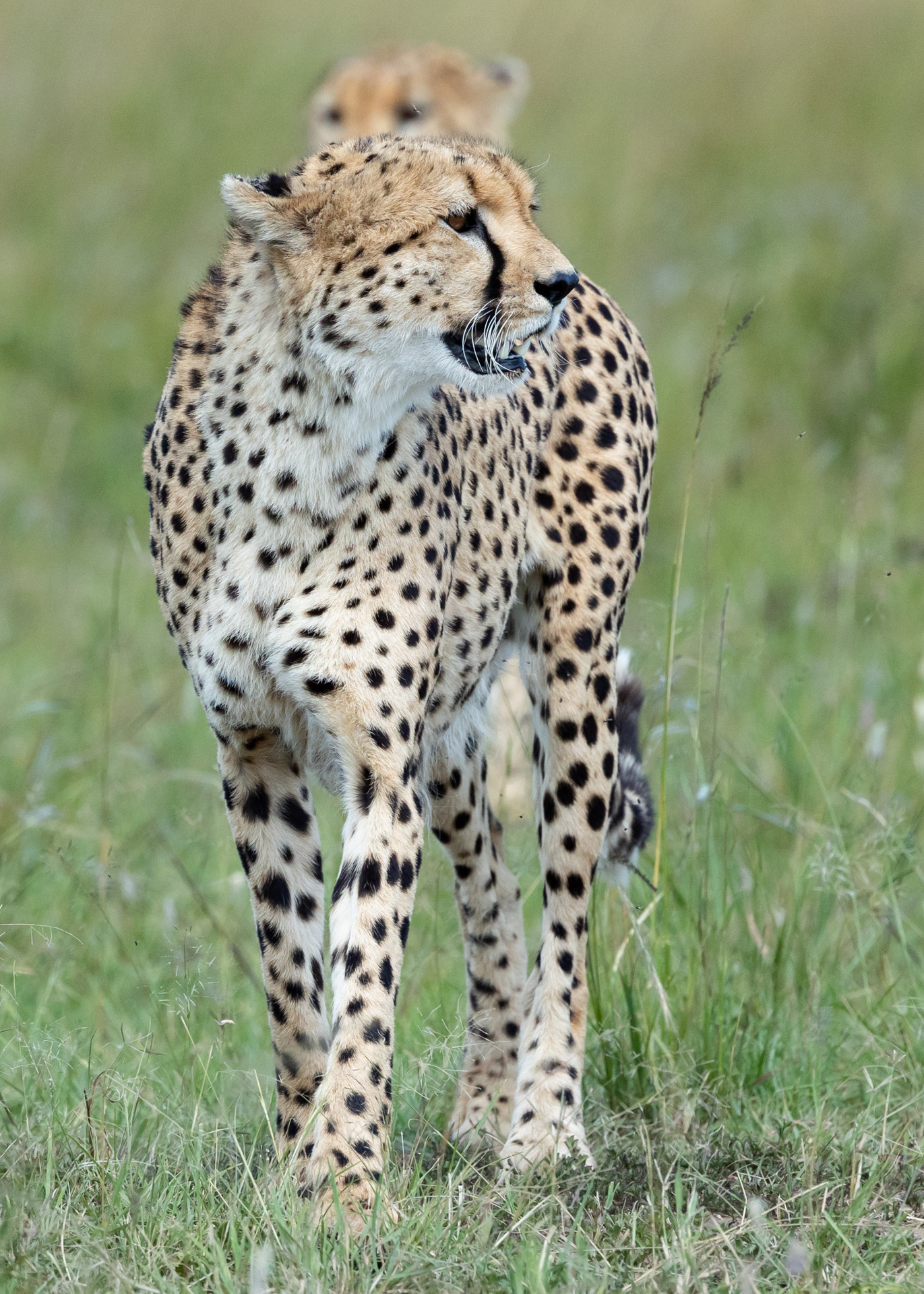
The radio was abuzz with news that Risasi’s brothers Ruka and Rafiki had been desperately trying to make a kill all morning without success. As luck would have it, their next attempt was a successful one and happened right in front of us. These two brothers showcased their hunting skills as they flanked a harem of impalas and successfully captured a young one.
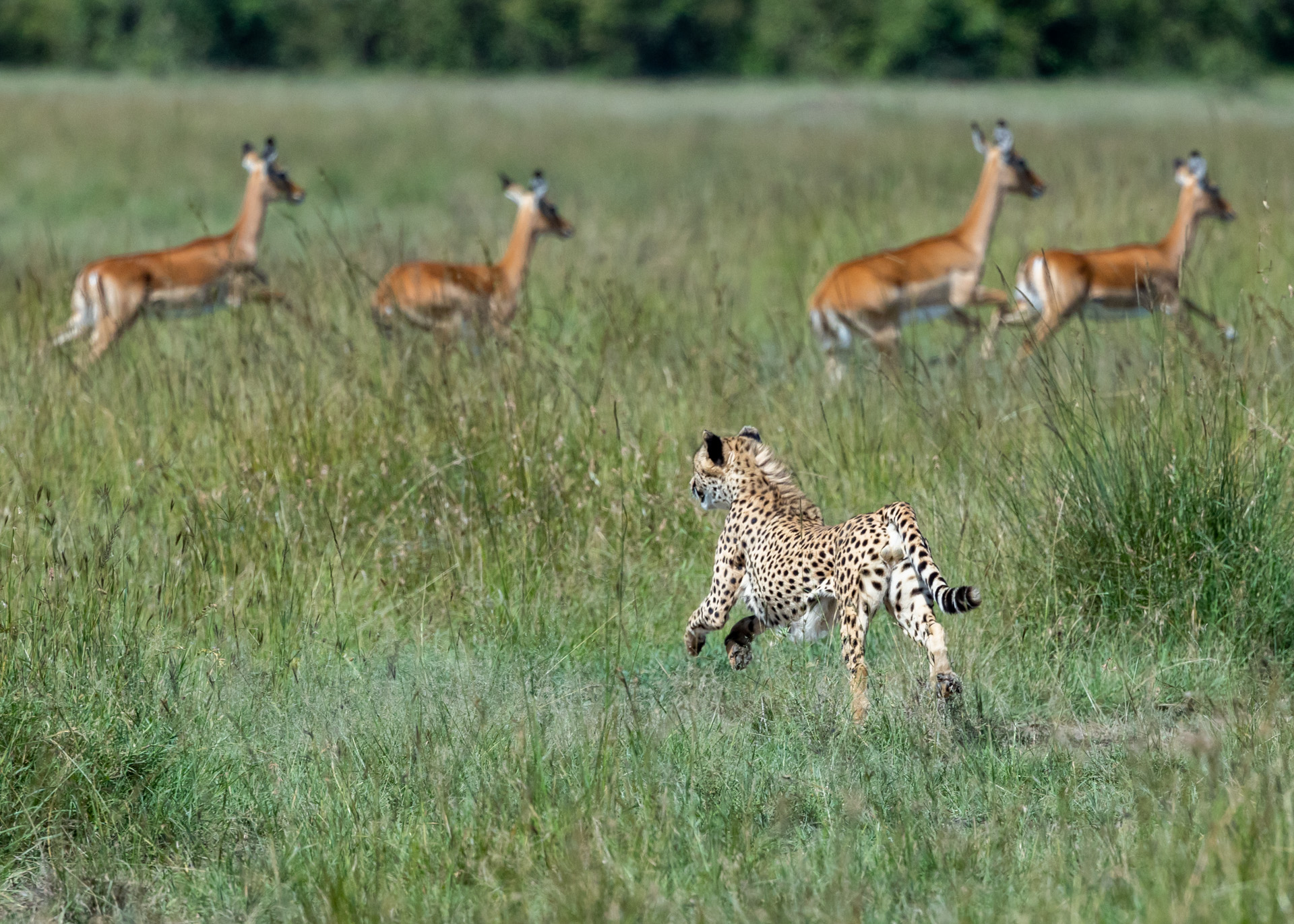
But their success was short-lived as a cheeky hyena was keeping an eye on their hunt. Before the brothers could enjoy their kill, the watchful hyena headed straight towards the brothers forcing them to abandon their hard-earned meal. They decided to surrender as a hungry cheetah is better than an injured one.
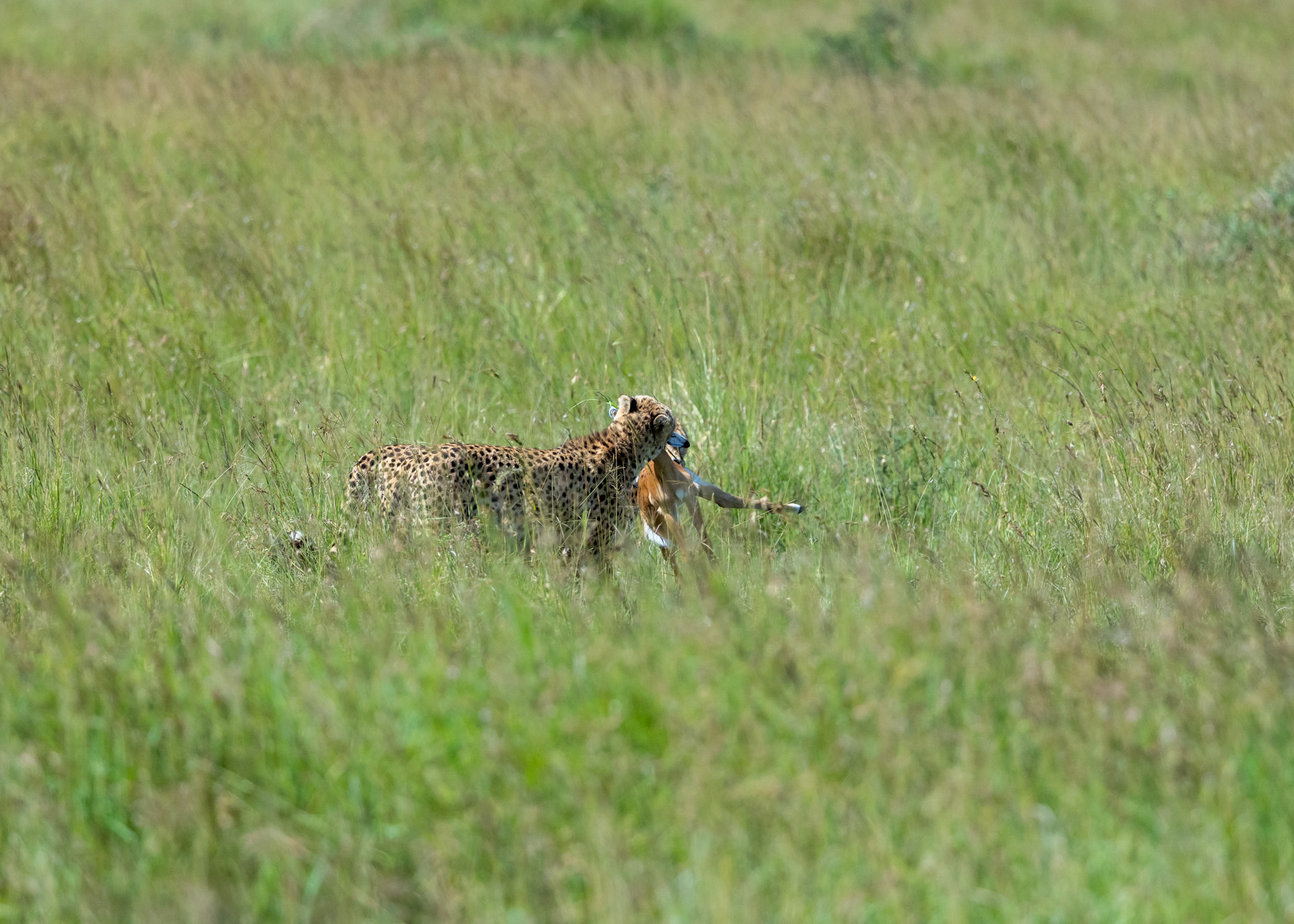
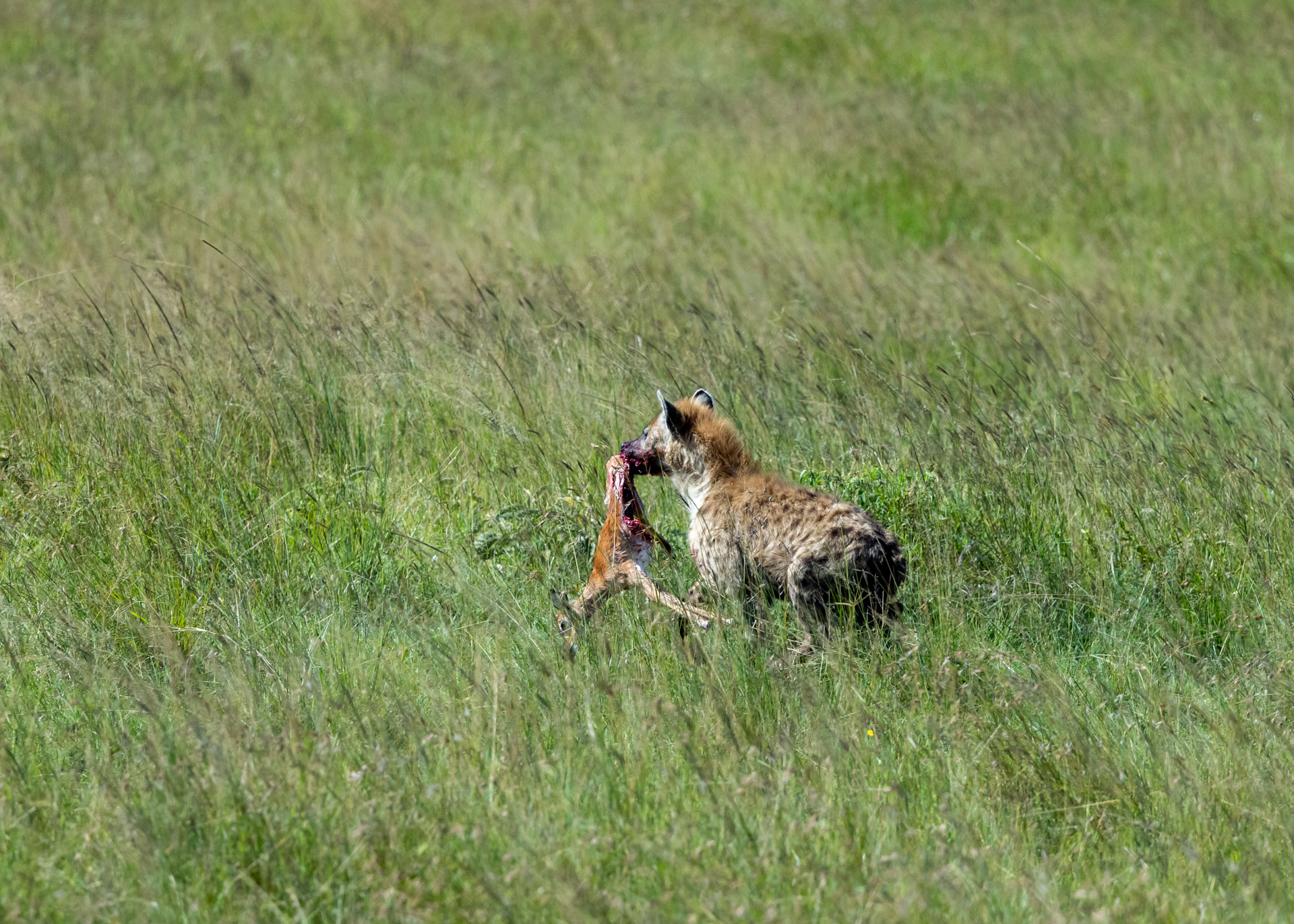
We caught up with two of the Inselberg males, Nusu and Ginger, feasting on a buffalo kill. With bulging stomachs, the two males huffed and puffed as they continuously chased away two young hungry lions that were desperate for a meal. It seems that when male lions hunt alone, they don’t particularly like to share their meal with others, however sated they may be.
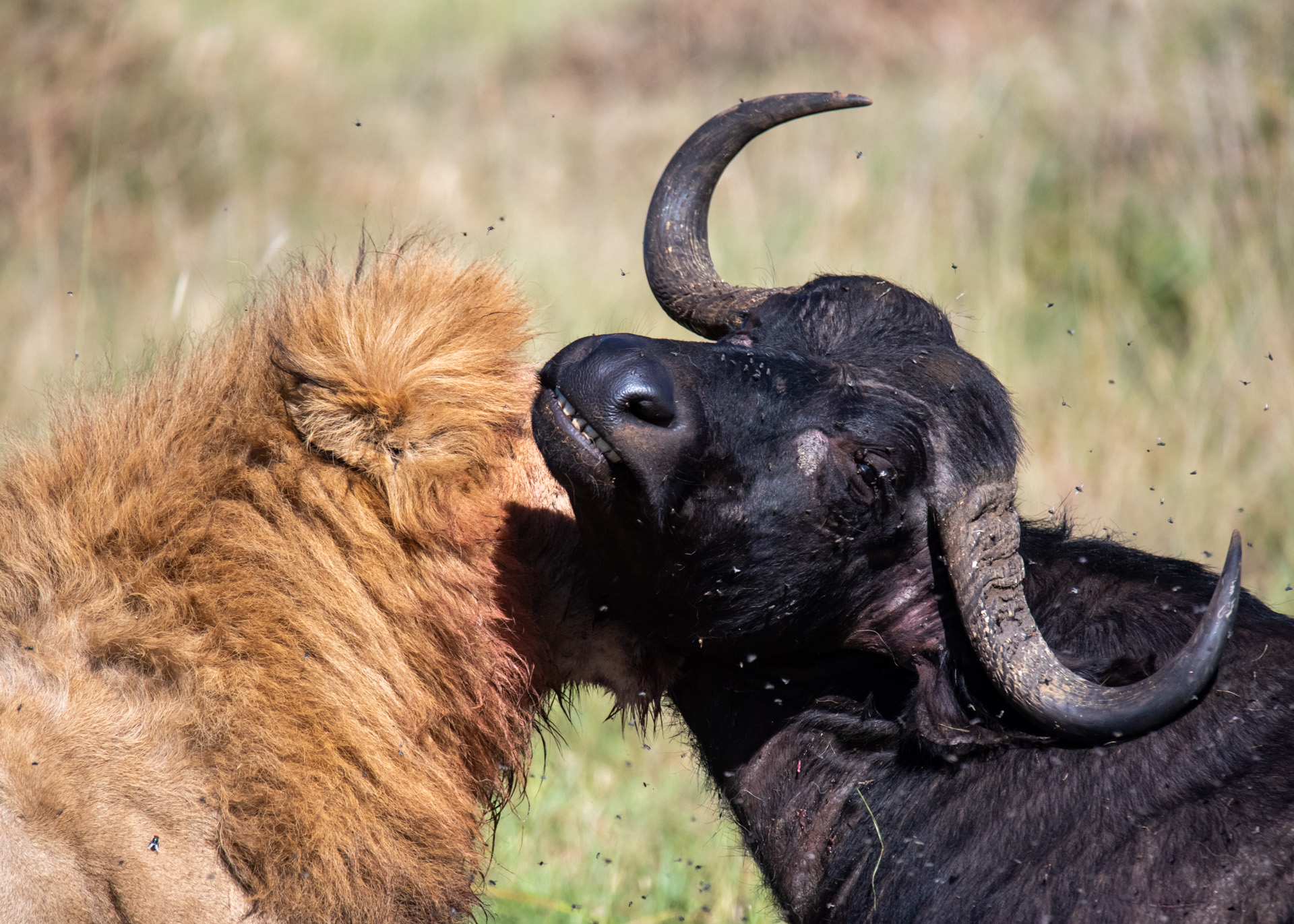

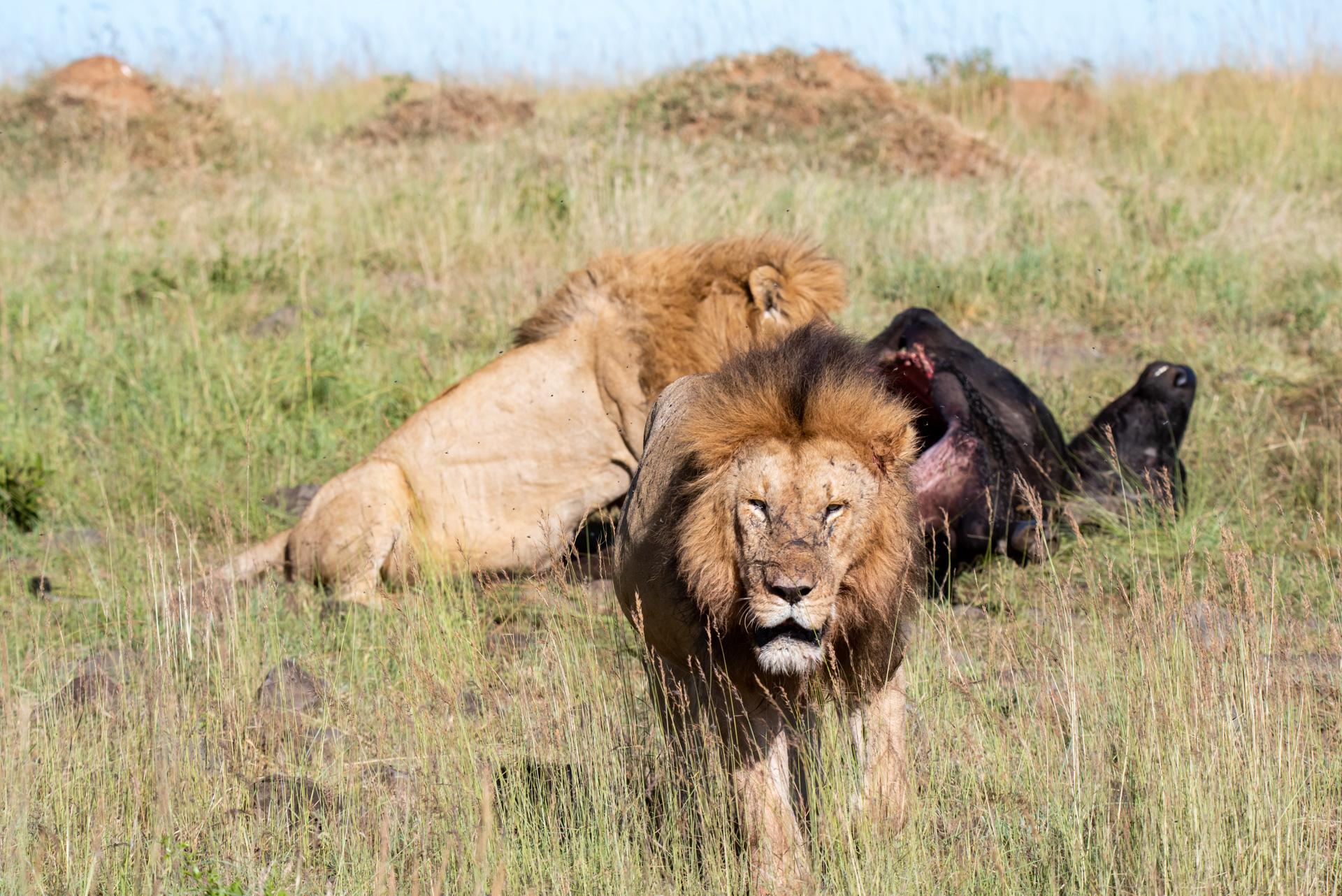
As we approached an area not far from where Risasi has recently been spotted near Serena, we noticed something moving in the grass. Upon closer inspection, we discovered it was a martial eagle, with a banded mongoose tightly grasped in its talons. The eagle seemed distracted and kept calling and looking up into the sky while protecting its kill with its wings. After some time, it flew to a nearby mound and not long after, another martial eagle came flying down and attempted to steal its meal.
The eagle managed to defend itself and was soon able to feast. When the images were reviewed, we noticed that both animals were tagged, one M3 and N9. Through conversations with the Mara Raptor Project (supported by the Angama Foundation), we learned that they were both females with adjoining territories. N9 is the Inselberg female (estimated to be about 13 years old) and M3 is the Mara River female (estimated to be about six years old).
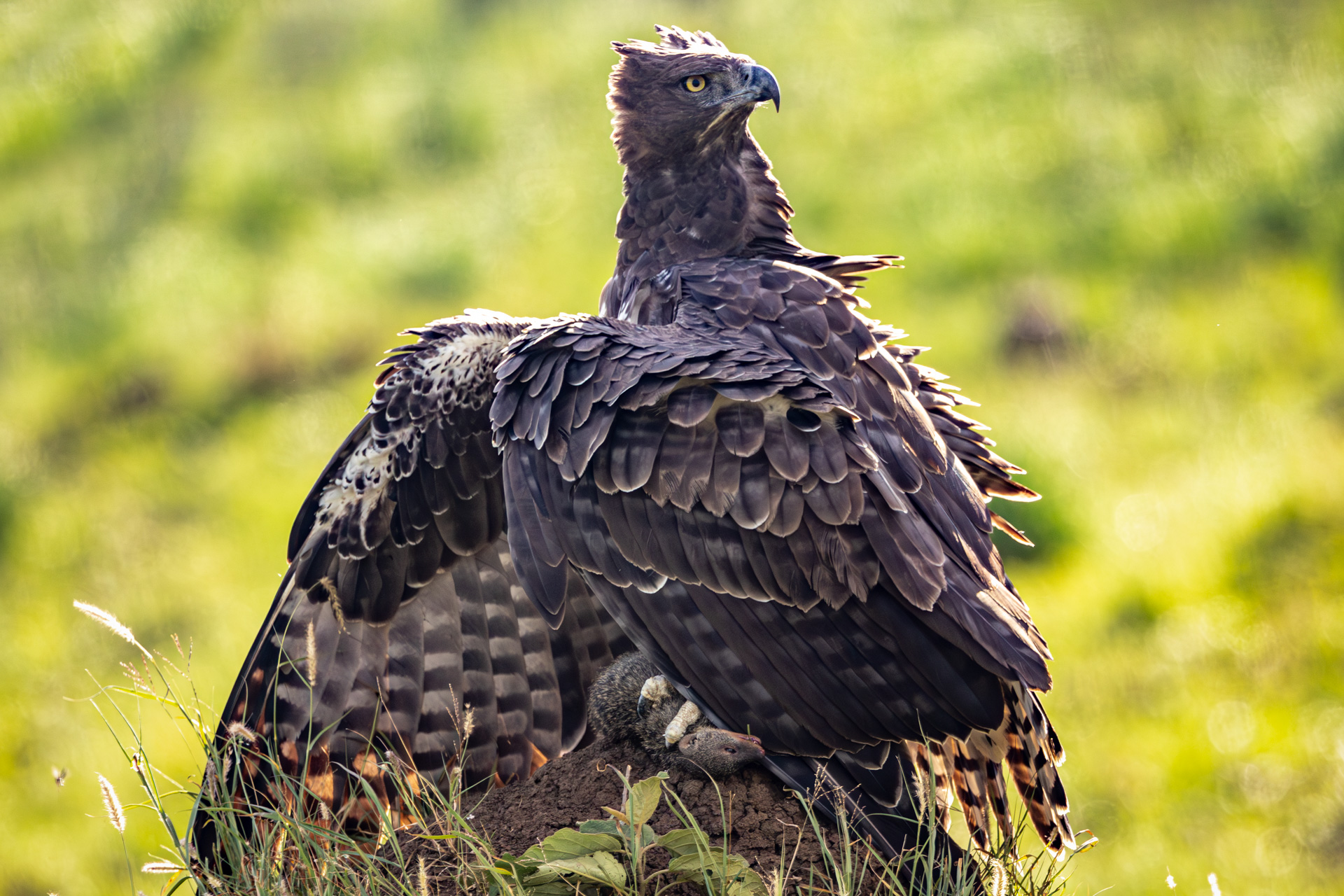

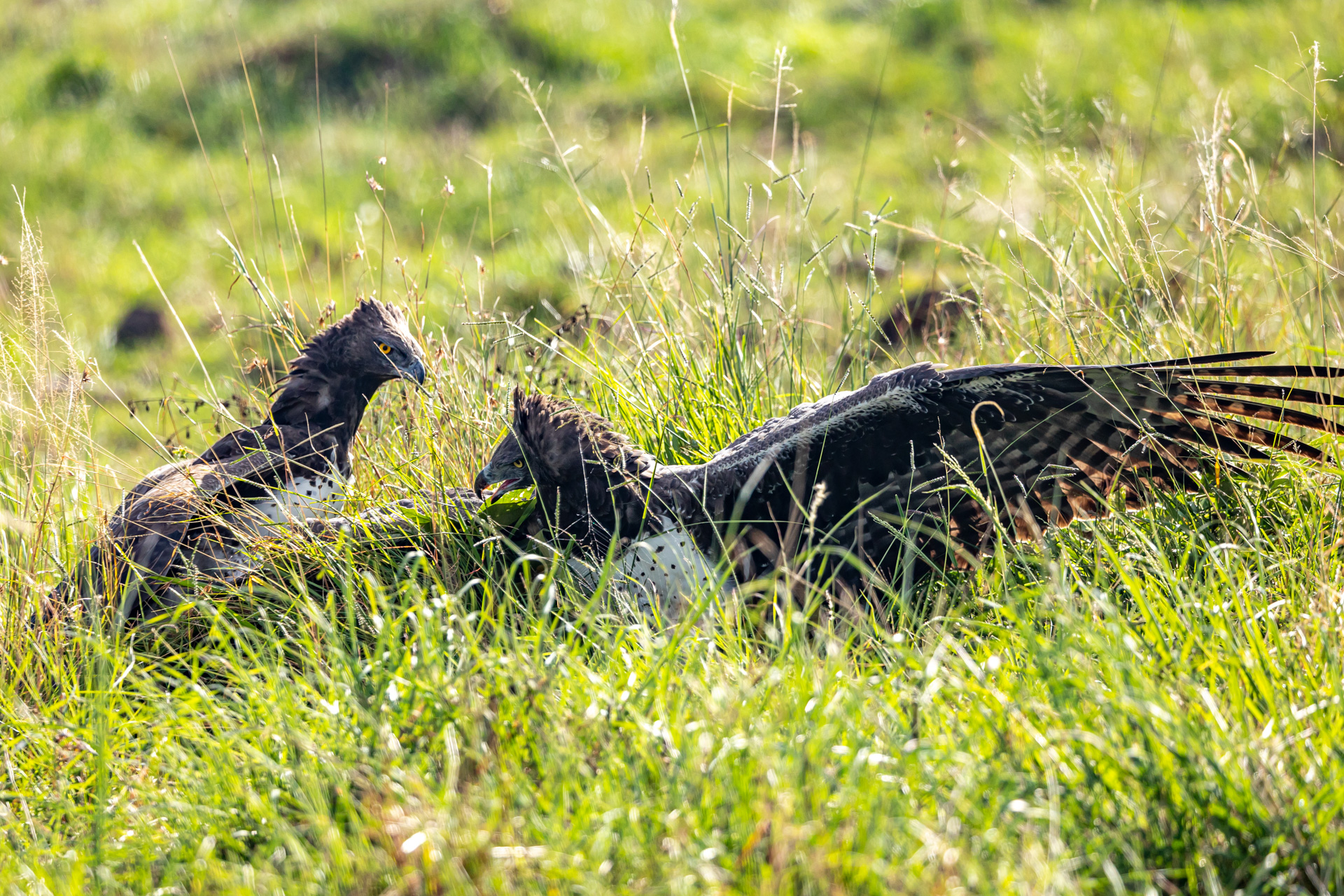
When we first saw the Egyptian Pride females towards the end of January, they had seven cubs, later we noticed they were down to five and now, just three remain. As formidable and protective as they are, a pride may lose 80% of their cubs. To help with this, lionesses often have cubs around the same time to increase their chances of survival by communally looking after and keeping them safe from predators and angry buffalo.

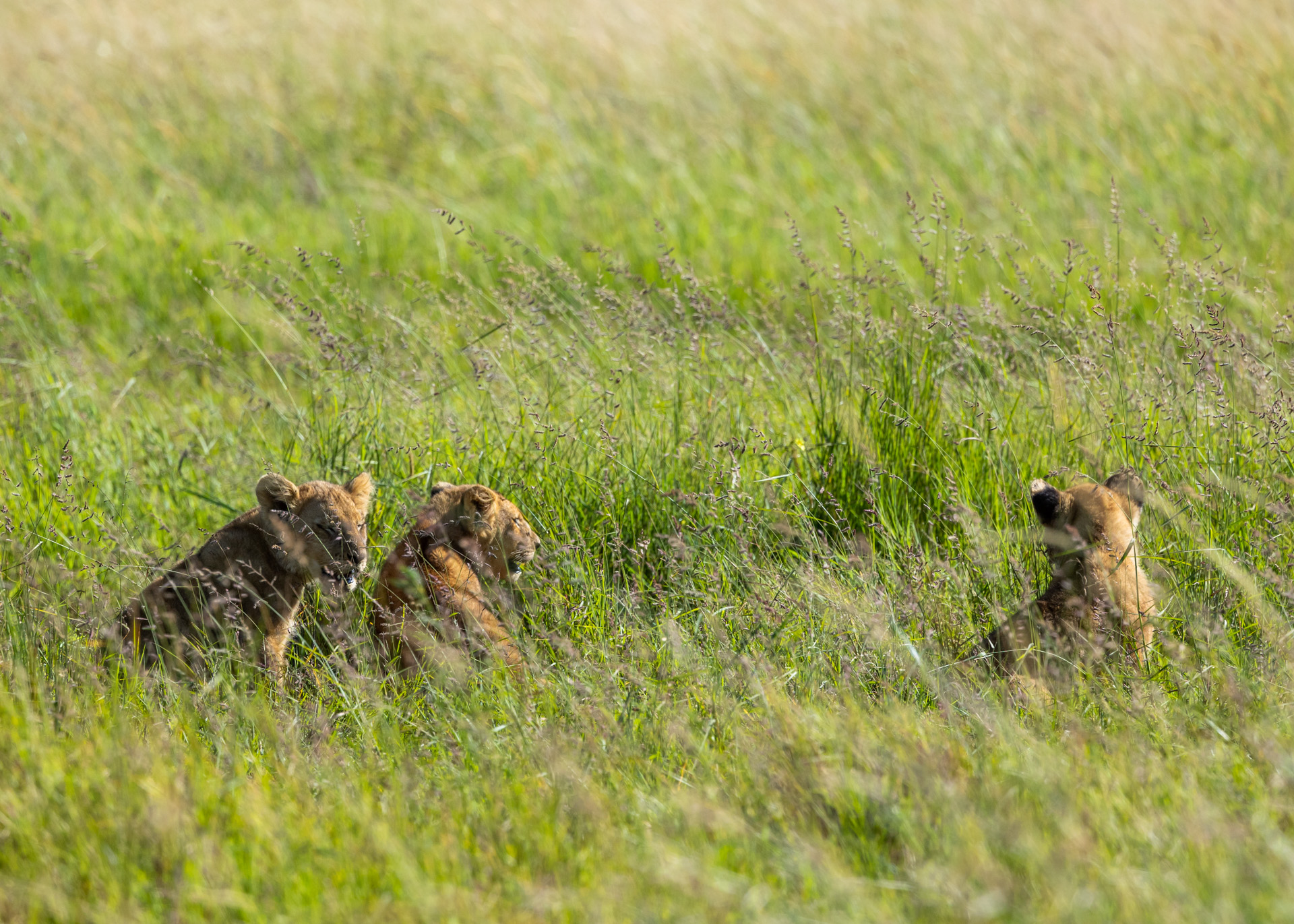
Game drives don’t always go as planned, and you can find yourself in quite a quagmire (in other words, getting stuck in the mud). If it’s safe to do so, get out of the car and inspect before crossing muddy terrain or ditches. This wasn’t the case for two content creators on a drive through the savannah to bring these good stories from the Mara Triangle. Luckily, we had the skills to make it out on our own.
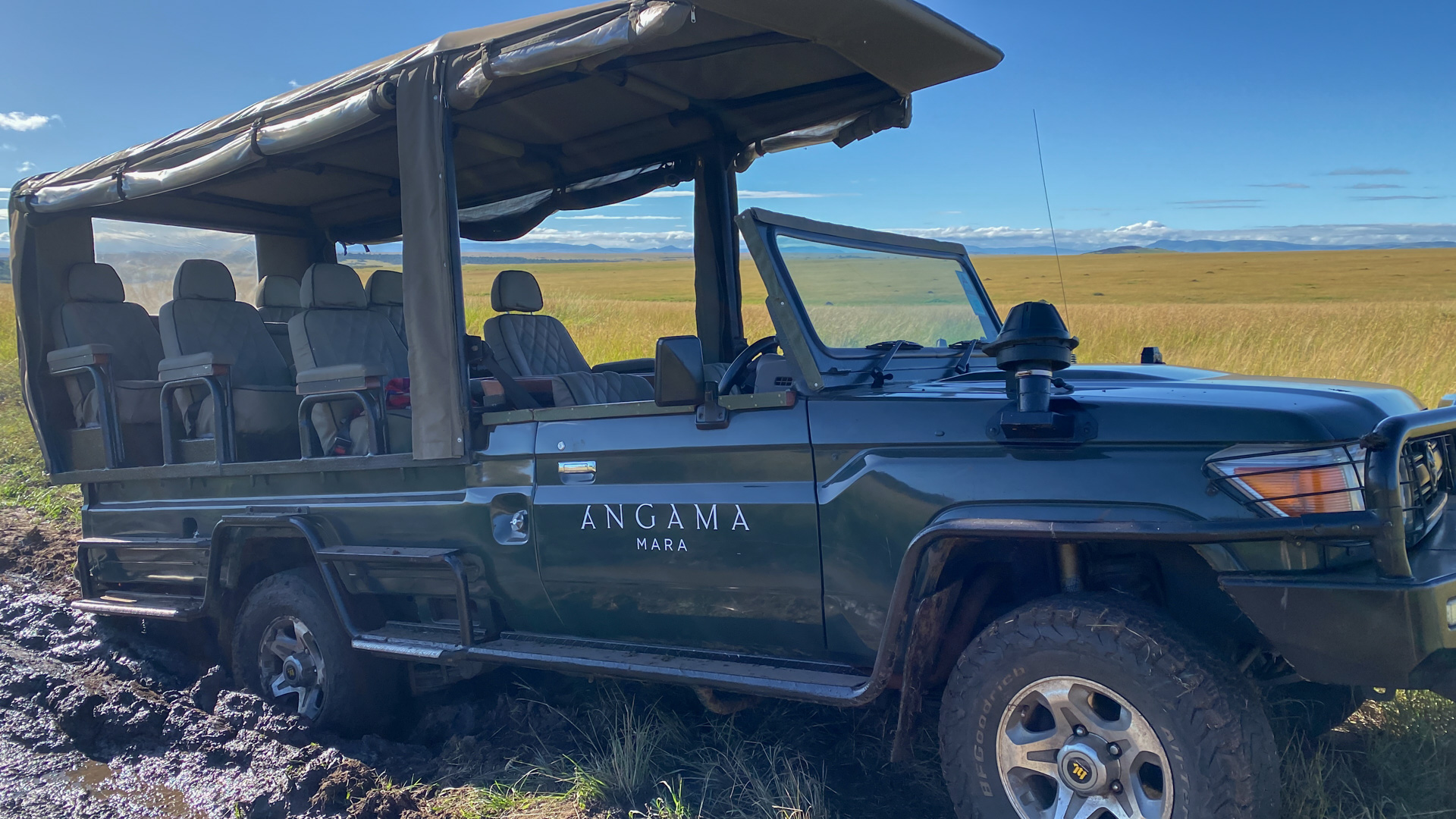
This week we had the privilege of hosting our (four-time) repeat guests, Herma and Steve. They are avid readers of our weekly blog and I had such a wonderful time with them on a drive — so this is my special shout-out to them!


This week a year
Small herds of wildebeest and zebra had already started to appear this week a year ago, but this year, there is no sign of the migrating herds just yet.
Filed under: This Week at Angama
Subscribe for Weekly Stories
Comments (0):
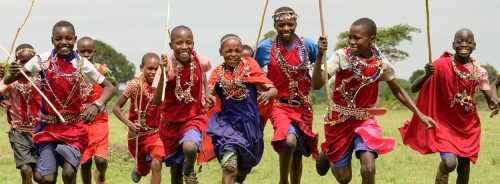
The Angama Foundation